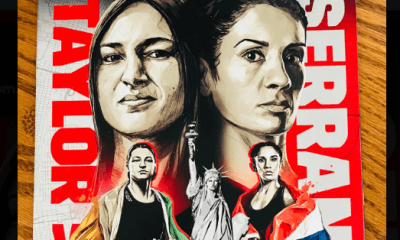Book Review
“12 Rounds in Lo’s Gym” by Todd D. Snyder: Book Review by Thomas Hauser
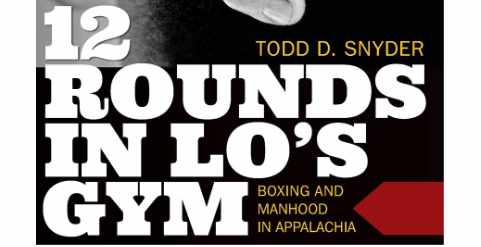
12 Rounds in Lo’s Gym by Todd D. Snyder (West Virginia University Press) is a memoir about Snyder, his father, Appalachia, and boxing in coal country.
Snyder grew up in Cowen, West Virginia, and paints a grim picture of life there.
“There is only one stoplight in the entire county,” he writes. “And that stoplight isn’t even necessary. Nothing much happens and when something happens that looks like something, everyone talks about it. To be a man, for the younger version of myself, was to dunk basketballs, catch touchdowns, score knockouts, and have sex with beautiful women, all before finding your place in the coal mines.”
The coal mines.
“When economic times get tough,” Snyder recounts, “so do the coal company lawyers. They’d shut down the mine, file bankruptcy, and cheat the workers out of their retirement money.” In 2015, Patriot Coal Corporation unfolded a plan to divert money that had been set aside for health care benefits for 969 retired coal miners to pay bankruptcy lawyers and other costs. “Now you see them, now you don’t,” Snyder writes. “No more health care benefits. Life in Cowen is no fair fight. You work till you die, be it in the early or late rounds of life. Folks know the judges aren’t gonna give them a fair shake when it goes to the scorecards. They know a fixed fight when they see one.”
And there’s one thing more to know about life in Cowen.
“Our heroes are defined by their ability to take punishment, their willingness to grit their teeth through pain. Even Jesus Christ with all his talk of peace, love, and forgiveness would have never made it big in my town if not for that long ring walk to Calvary. He had to prove that he was one tough son-of-a-bitch or nobody in Cowen would have taken him seriously.”
Todd’s father was Mike “Lo” Snyder. The nickname “Lo” came from his penchant as a star running back in high school to run low to the ground to hit holes that the offensive line opened for him and, when need be, open holes on his own.
“You can be a big fish in a small pond in a town like Cowen, West Virginia,” Todd notes. “You can be the prettiest girl in school or the richest kid in town or the toughest guy on the block. That’s what my father was – a big fish in a small trailer park.”
After graduating from Webster County High School, Mike Snyder exchanged his helmet and shoulder pads for a miner’s accessories.
“For years,” Todd continues, “he and my grandfather worked side by side at the Smooth Coal Company. Most young men from Cowen dream of becoming something better than their fathers, but their fathers are what they eventually become. That’s how cyclical poverty works.”
The cycle gnawed at Mike Snyder’s insides.
“My father was the kind of fellow who was always much happier in retrospect,” Todd remembers. “Never quite enjoying the moment itself. By the time he turned thirty-five years old, my father resigned himself to the fact that he’d accomplished all that he was ever going to accomplish. Those touchdowns hadn’t gotten him anywhere but right back to the place where folks had always told him he’d end up.”
“My only fear of death,” Mike Snyder once said, “is that hell might be coal powered. The devil will have a coal mine down there in hell heating things up, and I’ll have to be a damn coal miner the rest of eternity.”
Within that milieu, boxing was an important part of Mike Snyder’s life.
“My father’s childhood dream,” Todd recounts, “was to climb through the ropes at Madison Square Garden to beat the hell out of some poor fellow on national television and score a symbolic victory for the town of Cowen, for all of Appalachia perhaps.”
Several months after starting work at the Smooth Coal Company, Mike took up boxing. He had five amateur fights, winning all of them by knockout. Then marriage and the demands of coal mining ended his sojourn as a fighter. “If the right person would’a come along and paid some attention to me,” he later lamented, “I could’a made something out of this boxing shit.”
In 2000, Mike set up a makeshift boxing ring in a small room in the back of the Classic Curl Beauty Shop (a business run by his wife). It would be a ray of sunshine in an otherwise dreary life, he thought, to teach a few young men how to box. Four years later, the First Baptist Church of Cowen opened a community center and gave Mike the upstairs portion of the building for a gym as a way of enticing young men at risk into the church family. Then, in 2009 when it became clear that young men were coming to the gym to learn to box but not coming to Jesus, the church elders shut the gym down. Thereafter, Mike erected a small training facility in the yard behind his house.
“The second [Baptist church] reincarnation of Lo’s Gym was a big deal in our small town,” Todd recalls. “My father found himself with a gym full of thirty to forty kids a night, mostly teenagers. He’d work each kid three rounds on the hand pads, sometimes doing fifteen or twenty rounds in a row before taking a break. This after working a 4:00 a.m. to 5:00 p.m. shift in the coal mines each day.”
Mike Snyder had to convince his charges that conditioning and technique were as important as strength and toughness.
He was cautious about sparring.
“A bad sparring match,” Todd explains, “would run a kid off. He’d get whipped and you’d never see him again. My father wasn’t in the business of running kids off or getting them hurt. He mostly viewed the gym as a safe haven for poor and troubled kids. He didn’t care if any of the guys competed. Rarely would he let fighters take part in what trainers call live sparring.”
“One of my father’s biggest flaws as a trainer,” Todd continues, “was that he almost completely focused on the positives, rarely getting on a kid and telling him what he was doing wrong. My father’s formula was to build a kid up, give him as much confidence and self-respect as possible, occasionally nudging him about minor flaws in his technique.”
“Fighters from West Virginia don’t have many hometown heroes,” Todd acknowledges. “West Virginia fight towns have never been fortunate enough to have a working-class champion, at least not in the same way Youngstown, Ohio, celebrates Ray Mancini. Our boys were always in the tune-up fights, the last-minute replacements, the underdogs. A few ol’ boys from the Mountain State had the opportunity to get in the ring with boxing’s elite. Our boys always came out on the wrong end of it. When you turn eighteen years old, you get to chew stuff, buy lottery tickets, and sign up for your first Toughman Contest. But the working-class man-boys from my town always had their carriages turned back into pumpkins. Everyone thinks they can box until they give it a try.”
For the young men training in Lo’s Gym, a “champion” was a fighter who won a minor regional amateur title. Or maybe a local toughman contest.
The three gyms saved Mike Snyder’s life as much as they enhanced the lives of the young men who learned to box there. They gave him purpose. And ultimately, they brought him recognition. As word of “Lo’s Gym:” spread, he was honored by the Jefferson Awards Foundation in a ceremony at the state capital and later invited to attend the national awards ceremony in Washington DC.
The Jefferson awards, Todd explains, were designed “to highlight the accomplishments of ordinary folks who did exceptional things in their communities without expectation of recognition. My father had never been to our nation’s capital. I’m not sure if he had ever been to West Virginia’s state capital. He hadn’t been much of anywhere outside of the Tri-State Boxing Association. My grandmother bought my father a J.C. Penny suit for the award ceremony. It was probably the first suit he’d owned in his life.”
Meanwhile, Todd’s life had taken him away from Appalachia. Writing of his early years, he recalls, “I didn’t fish. I didn’t hunt. No turkey season. No deer camp. No tree stand. I didn’t ride four-wheelers. I didn’t drive a jacked-up Ford truck with a lift kit. I didn’t chew Skoal or score touchdowns. I didn’t fit.”
Thus, the move away from home.
“My decision to ship off to college required a new identity, a new understanding of my own Appalachian manhood. We are born into communities and family work histories that demonstrate a very rigid pathway to becoming men. If we earn college degrees, we become The Other. We’ll never be able to come back home.”
He’s now an associate professor of English at Siena College in Albany, New York, far removed from the coal mines of Appalachia.
Snyder is a good writer. He crafts well-drawn portraits and moving vignettes about the dozens of young men and the occasional woman who filtered in and out of Lo’s gym and became, however briefly, boxers.
“Stereotyped and stigmatized,” he says in summary,” Appalachian folks are easy prey, socioeconomically bullied by privileged society, the by-product of a uniquely Appalachian socioeconomic system, one that lacks access to both economic and educational opportunity. Our stories are tragic and beautiful. In these parables of Lo’s Gym’s, I write the story of Appalachia. This is who we are – fighters. We fight like hell, knowing the other fellow has the advantage.”
12 Rounds in Lo’s Gym is as much about brawling in a boxing ring as boxing. It’s about gym fights, toughman contests, and amateur bouts with a few low-level professional encounters thrown in. And it’s a reminder of what boxing can do to lift up young men and women who have gone through life without much hope or self-esteem and have little else to celebrate in their lives.
Thomas Hauser’s email address is thomashauserwriter@gmail.com. His most recent book – A Dangerous Journey: Another Year Inside Boxing – was published this autumn by the University of Arkansas Press. In 2004, the Boxing Writers Association of America honored Hauser with the Nat Fleischer Award for career excellence in boxing journalism.
Check out more boxing news on video at The Boxing Channel
To comment on this story in The Fight Forum CLICK HERE
-
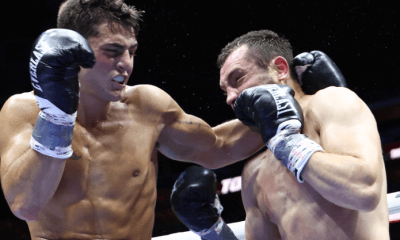
 Featured Articles3 weeks ago
Featured Articles3 weeks agoVito Mielnicki Jr Whitewashes Kamil Gardzielik Before the Home Folks in Newark
-
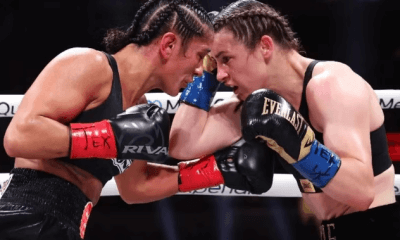
 Featured Articles3 days ago
Featured Articles3 days agoResults and Recaps from New York Where Taylor Edged Serrano Once Again
-
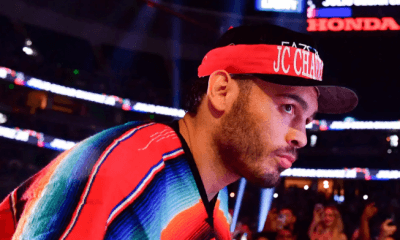
 Featured Articles1 week ago
Featured Articles1 week agoFrom a Sympathetic Figure to a Pariah: The Travails of Julio Cesar Chavez Jr
-
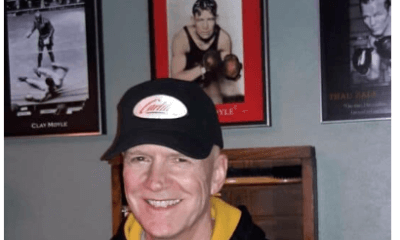
 Featured Articles4 weeks ago
Featured Articles4 weeks agoCatching Up with Clay Moyle Who Talks About His Massive Collection of Boxing Books
-
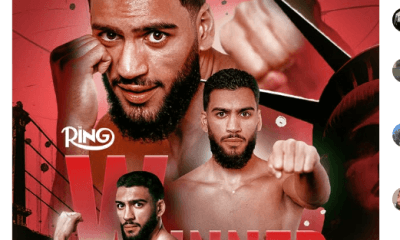
 Featured Articles2 days ago
Featured Articles2 days agoResults and Recaps from NYC where Hamzah Sheeraz was Spectacular
-
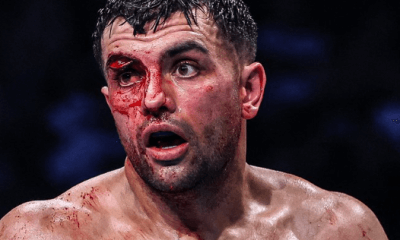
 Featured Articles1 week ago
Featured Articles1 week agoCatterall vs Eubank Ends Prematurely; Catterall Wins a Technical Decision
-
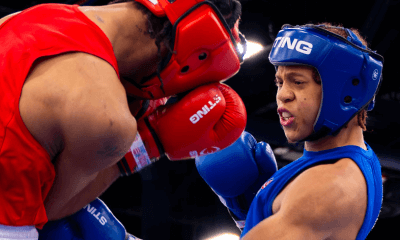
 Featured Articles3 weeks ago
Featured Articles3 weeks agoMore Medals for Hawaii’s Patricio Family at the USA Boxing Summer Festival
-
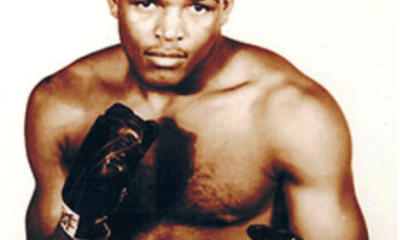
 Featured Articles3 days ago
Featured Articles3 days agoPhiladelphia Welterweight Gil Turner, a Phenom, Now Rests in an Unmarked Grave

